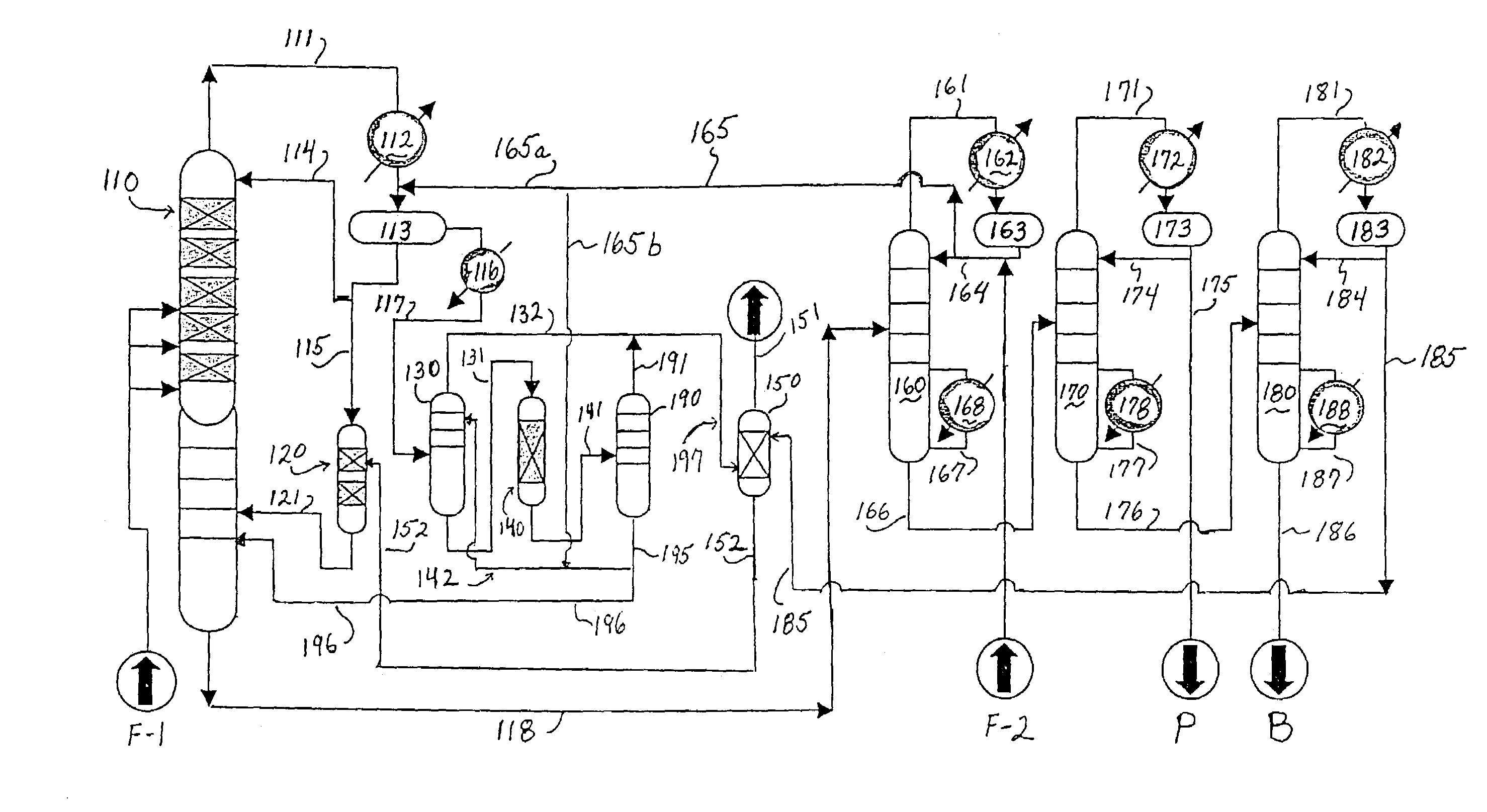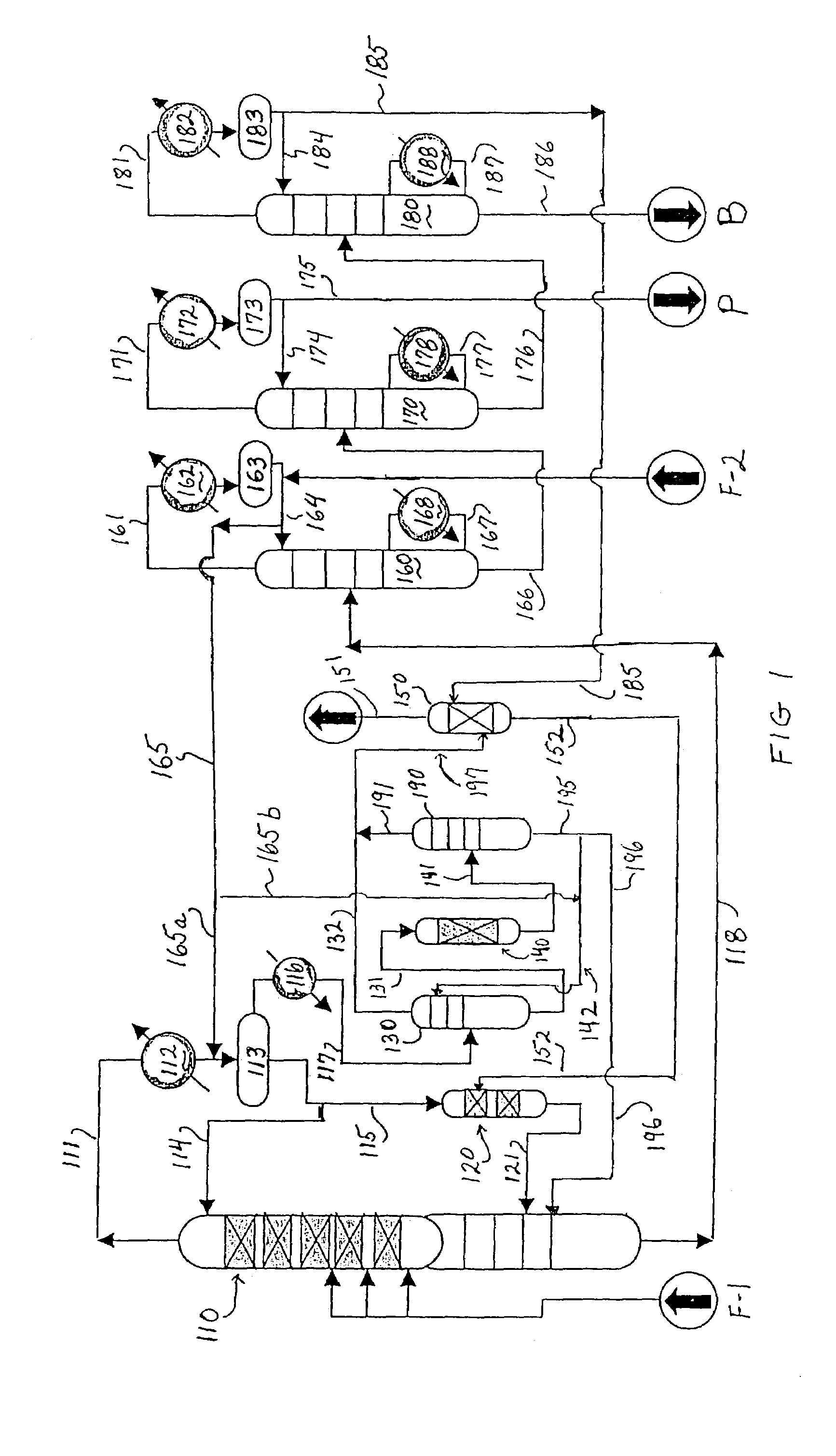Process for the production of alkylbenzene with ethane stripping
a technology of alkylbenzene and ethane, which is applied in the direction of physical/chemical process catalysts, sustainable manufacturing/processing, and separation processes, etc., can solve the problems of ethylene contained in vent gas, undesirable polyethylbenzene, and ultimately loss of ethylene, so as to achieve the effect of higher overall conversion of ethylen
- Summary
- Abstract
- Description
- Claims
- Application Information
AI Technical Summary
Benefits of technology
Problems solved by technology
Method used
Image
Examples
Embodiment Construction
)
[0015]The alkylation process of the present invention can be employed for alkylation of benzene with any suitable olefin, such as ethylene, propylene, and the like. However, the process herein is particularly advantageous for the production of ethylbenzene and will be described in connection with the alkylation of benzene with ethylene. It should be remembered that propylene or other olefins may also be used and are considered to be within the scope of the present invention.
[0016]The process of the present invention includes a second alkylation finishing reactor to convert substantially all of the remaining olefin carried over in the vent gas from the alkylator. This improvement prevents the loss of olefin yield and reduces the amount of catalyst required in the alkylator. The process herein also includes an ethane stripper for reducing the volume of inerts cycled through the finishing reactor system.
[0017]Referring to FIG. 1, an ethylene feed F-1 and a benzene feed F-2 are introdu...
PUM
| Property | Measurement | Unit |
|---|---|---|
| temperature | aaaaa | aaaaa |
| pressure | aaaaa | aaaaa |
| temperature | aaaaa | aaaaa |
Abstract
Description
Claims
Application Information
 Login to View More
Login to View More - R&D
- Intellectual Property
- Life Sciences
- Materials
- Tech Scout
- Unparalleled Data Quality
- Higher Quality Content
- 60% Fewer Hallucinations
Browse by: Latest US Patents, China's latest patents, Technical Efficacy Thesaurus, Application Domain, Technology Topic, Popular Technical Reports.
© 2025 PatSnap. All rights reserved.Legal|Privacy policy|Modern Slavery Act Transparency Statement|Sitemap|About US| Contact US: help@patsnap.com



